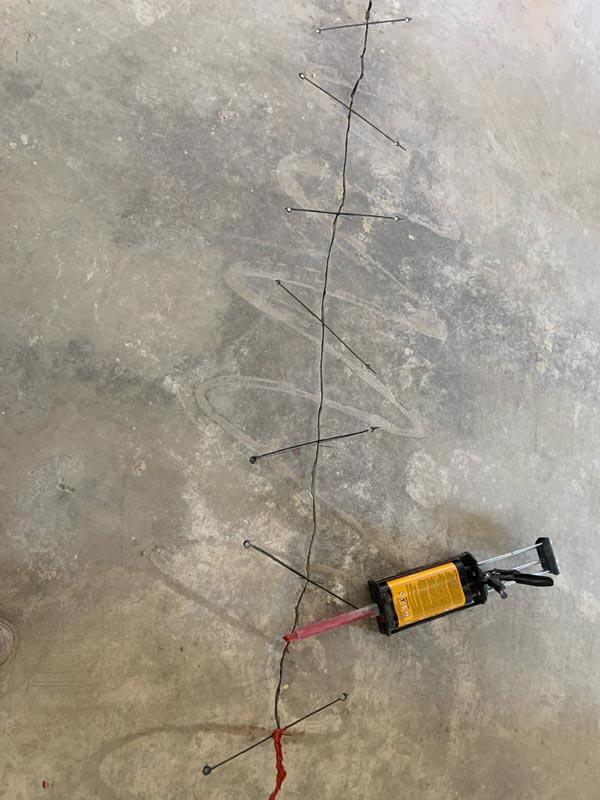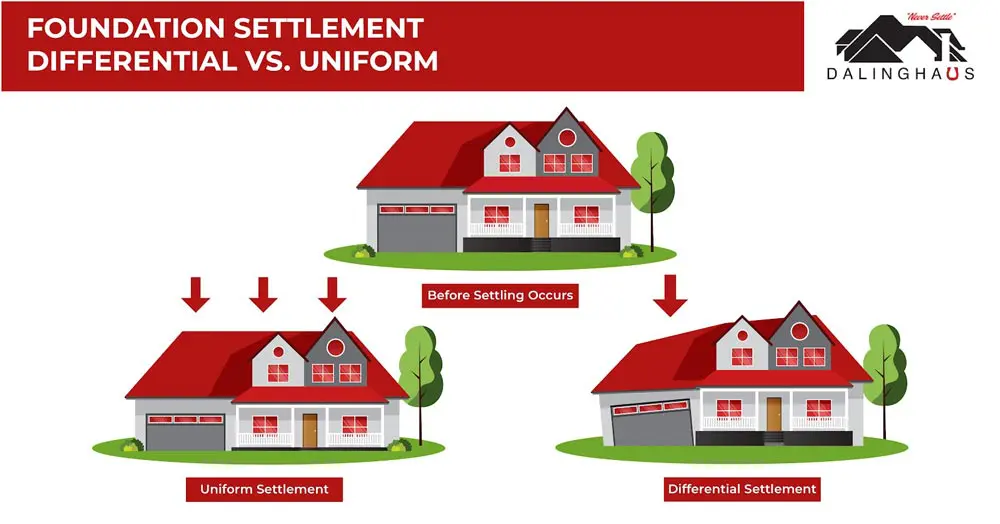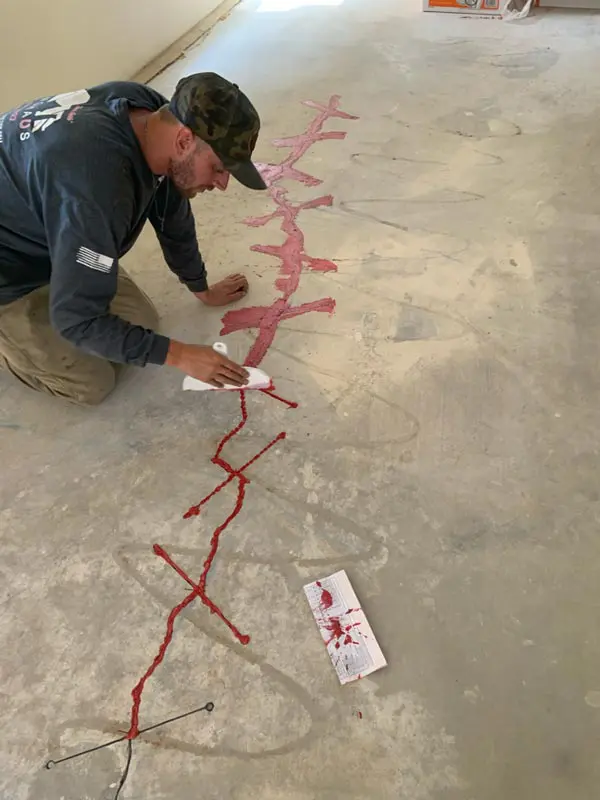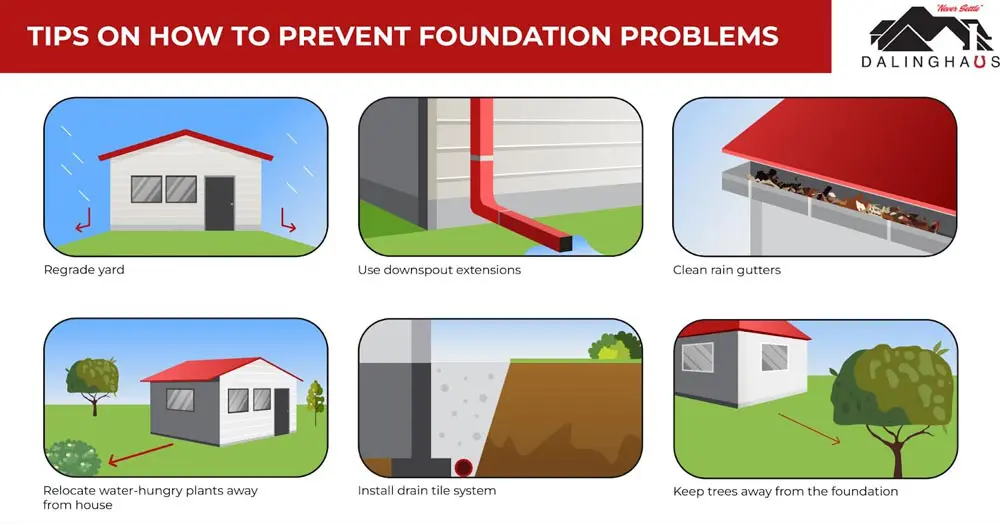Are you looking for information about concrete garage floor repair? If so, you’ve landed on the right page because that’s what we’re going to cover in this article. We’ll go over what you need to know about cracks in a concrete garage floor, what causes a concrete garage floor to crack, repair solutions, and more.
What You Need To Know About Concrete Garage Floor Cracks

There are two kinds of concrete garage floor cracks, those that are non-structural and those that are structural. Here’s what this means:
Structural cracks in a concrete garage floor
Structural cracks are the most serious because they affect the structural integrity of the garage floor and the garage itself. Common signs a crack in a concrete garage floor is structural include the following:
- The crack goes all the way across the garage floor.
- The crack is not a hairline crack.
- One side of the crack is higher than the other.
If the crack looks serious, it probably is. Use your intuition. If you suspect the crack in your concrete garage floor is structural, immediately contact a foundation repair contractor and ask for an evaluation.
Non-structural cracks in a concrete garage floor
While they may be ugly, non-structural don’t affect the structural integrity of the garage floor. Still, non-structural cracks can allow water to seep through the floor and into the garage. Therefore, they should be sealed.
What Causes Cracks In A Concrete Garage Floor?
Non-structural cracks in a garage floor are usually hairline and are caused by shrinkage during the concrete curing process.
Structural garage floor cracks are often caused by a phenomenon called “differential settlement.” This is when the garage’s foundation settles into the ground unevenly. Differential settlement places a lot of stress on the foundation and can lead to a cracked garage floor.

Structural cracks caused by differential settlement require the assistance of an experienced foundation repair contractor. Fixing structural cracks is not a DIY project.
Concrete Garage Floor Repair Solutions
The chosen repair solution depends on whether the garage floor crack is structural or non-structural.
How to repair a non-structural crack in a concrete garage floor

If the crack is non-structural, two common repair solutions are epoxy and polyurethane crack injection. They both create a strong bond that will prevent water infiltration through the crack.
How to repair a structural crack in a concrete garage floor
Since structural cracks in a garage floor are usually caused by differential settlement, underpinning is a common repair solution. Underpinning involves using piers to extend the garage’s foundation down to soil that can support it. Once the piers are in place, the garage’s foundation is raised, and this usually closes the cracks. The cracks can then be sealed to prevent water infiltration.
To make sure the problem doesn’t reoccur, the cause of the differential settlement will need to be determined and fixed. For example, if the settlement was caused by poor drainage, installing a drain tile system might be necessary.
Tips On How To Prevent Foundation Problems
Fortunately, there are things homeowners can do to prevent foundation problems. Because most foundation issues are caused by excess moisture in the soil, you can go a long way toward avoiding trouble by controlling groundwater around the foundation. Here are some ways to do that:
- Clean your gutters regularly – Make sure your gutters are clean and not clogged with leaves, twigs, and debris. If gutters aren’t working correctly, water can spill over the side of the house and soak into the ground around the foundation.
- Use downspout extensions – Installing downspout extensions is another useful strategy for controlling groundwater around the foundation. Downspout extensions are pipes that direct water from the gutters away from the house before release.
- Regrade your yard, if necessary – This process involves changing the slope of the ground to redirect and drain water away from the foundation. If the yard slopes toward the house, it will cause groundwater to pool around the foundation, which could cause problems.
- Install a drain tile system – When it comes to foundation waterproofing, nothing beats a drain tile system. It comprises a buried perforated drainage pipe surrounded by gravel that redirects groundwater toward a sump pit. When the pit fills with water, a sump pump turns on and expels the water away from the foundation. A drain tile system effectively prevents excess moisture from building up in the ground around the foundation.
- Consider relocating water-hungry vegetation – While flowers and shrubs might look beautiful next to the house, they need water.
- Keep trees away from the foundation – Large trees often have extensive root systems that can infiltrate the ground under the foundation, “drink” moisture from the soil, creating voids. If the foundation sinks into the voids, differential settlement will result.

If you’re looking for more information about concrete garage floor repair, contact us today to schedule an evaluation and receive a repair estimate. We serve areas in Southern California, Arizona, and Nevada.






